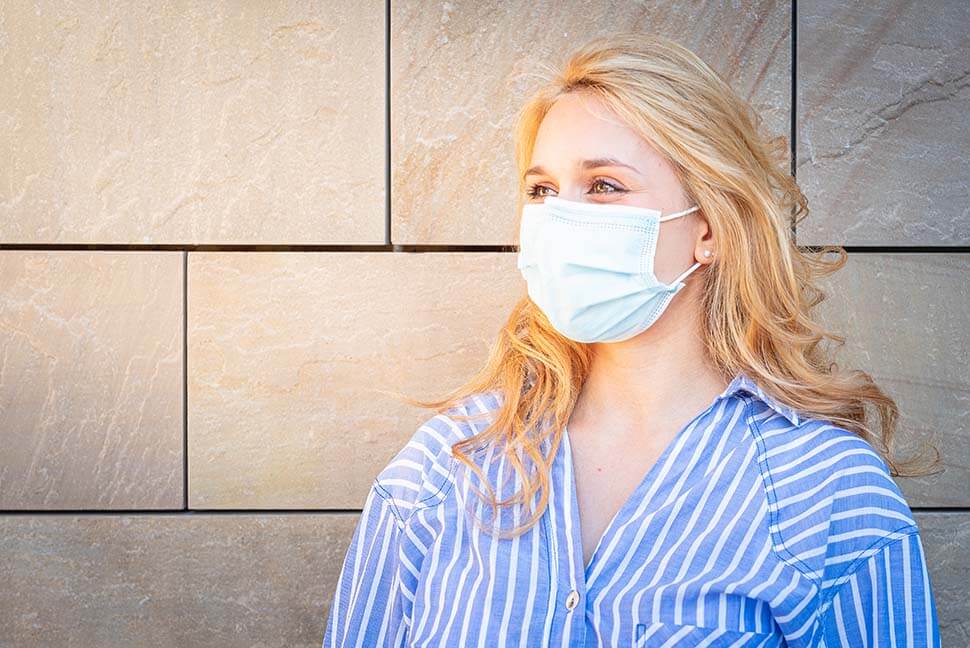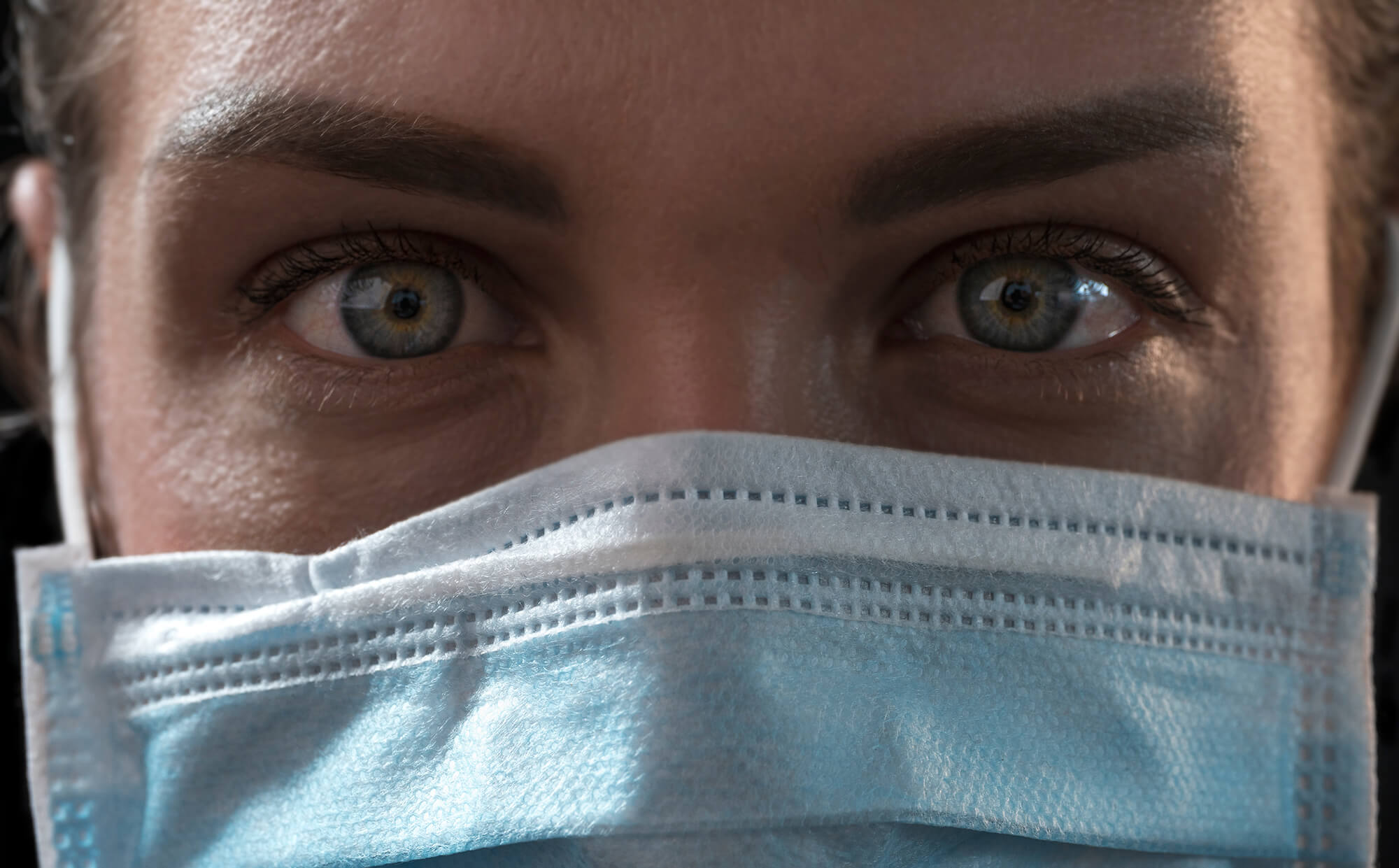. BLOG .

The COVID-19 Pandemic has drastically changed our lives, with several measures being taken to minimize its spread across populations- if not end it completely.
As the virus is known to spread at a fast pace among individuals, one of these extreme measures imposed on people is wearing face masks.
Having now become both a necessity and authoritative in our daily lives for our health and survival, growing interest has also risen in knowing whether this form of face covering would make us look more or less attractive.
People tend to look very different when wearing face masks – even better looking.

How do Science and perception enable us to see people wearing face masks as much better looking?
In order to provide an explanation for the above, Dr. Bence Nany (Professor of Philosophy) uses the perception of objects which are partly obstructed – that of amodal completion.
Taking a simple example, when we see a cat behind a picket fence, only some parts of the cat are visible. We however, are aware of the whole cat. Those parts of the cat that are not visible are amodally completed i.e.: they are completed by our perpetual system.
Similarly, amodal completion can be utilized when seeing someone wearing a mask. With both the nose and mouth being unseen as a result of being covered, there is no part of the retinal image that would correspond to these parts of the face. They do however, show up in visual processing already in the primary visual cortex.
Considering someone wearing a mask whom we know and having seen his / her nose and mouth before, our perceptual system can rely on memory. Here, our episodic memory supplies the information to the visual system, which the retina cannot provide.
Often however, our memory tends to be vague especially regarding people whom we don’t know that well, with it being of no help when seeing strangers.
When it comes to strangers specifically and since we neither have retinal information nor memory, our visual system uses general information on how the nose and mouth look like in order to complete these parts covered by the mask and come up with an image – this generalized information coming from numerous mouths and noses which we have seen.
The average face which our visual system compiles based on a large number of episodic memories of faces, gives a more appealing image than what is likely to be present behind the mask, as our memory is better at retaining images which are more beautiful and artistic. Hence, the generalized information which the amodal completion provides, is ideal information in a way – something which looks a lot better than the face under the mask which is “non ideal”.
Based on research, are people seen more attractive when wearing face masks?
According to an online study conducted in Philadelphia, PA entitled “Beauty and the Mask” (a joint project between Temple University’s College of Public Health and the University of Pennsylvania) in the US, 60 faces were rated both with and without face masks.
Dr. David Sarwer who was part of the team which carried out the research, said there is now evidence suggesting that in reality, people wearing face masks when going in public, will be seen by others as being more attractive.
What is interesting is that although hardly anyone’s ratings on attractiveness dropped when wearing the mask, the individuals who scored the highest improvements in ratings were the ones perceived as being unattractive without the mask.
This study did not address however, the reasons prompting people to choose masks, with this covering being used by them as a form of unselfishness to protect others from the spread of the virus.
If I can’t see someone’s face, how can I say that they are more attractive with the mask on than without it?
Dr. Serwar states that wearing a face mask camouflages the features of the inner face either less symmetrical or not in harmony in terms of size and proportion with the rest of the face. (facial symmetry in terms of the middle lining of the face, right side vs left), which is considered very important when judging attractiveness. Hence, face masks play a crucial role in hiding these features of the face which make a person less attractive.
He said that faces were found to be much more attractive when masked, with only their eyes being seen when compared with the entire face – a reminder that the eyes were something to which people were very attracted.

The view of “incomplete” faces was found to be more attractive, seems to also be supported in a study conducted by researchers Diana Orghian and Cesar Hidalgo in early 2020 and published in Scientific Reports. According to the study, people judged incomplete faces in photographs to be much more attractive than those which were entirely visible. According to Diana Orighian, faces which were covered or obstructed by something else, tended to be more attractive and that people tended to fill the missing parts with positive details or expectations.
According to Vanessa Brown, a senior lecturer in design and culture at Nottingham Trent University in the UK, it is quite attractive when the face is covered while the eyes are visible, with the viewer being drawn into a potential intimacy since a lot of other things are being withheld.
Are there any studies refuting the claim that wearing face masks increases attractiveness?
According to a 2016 study published in Japanese Psychological Research, Yuki Miyazaki and Jun‐Ichiro Kawahara, with the support of some Japanese women who wear sanitary face masks when not wearing makeup, it was found that facial attractiveness was decreased due to wearing a sanitary mask. A key reason for this however, was that people wearing these masks were considered unhealthy.
The impression formed from this study, should be changed drastically considering the current COVID-19 Pandemic and how imperative it has become to wear masks.
Since face masks were found to increase attractiveness, should they be worn for the foreseeable future?
To answer this, it is important to put things in context. In times of a global pandemic as the one we are currently witnessing, it is mandatory, necessary and socially acceptable to wear a face mask which happens to make an individual look more attractive. In a different setting though, a person wearing a mask may be negatively judged, despite it making him/ her look more attractive.